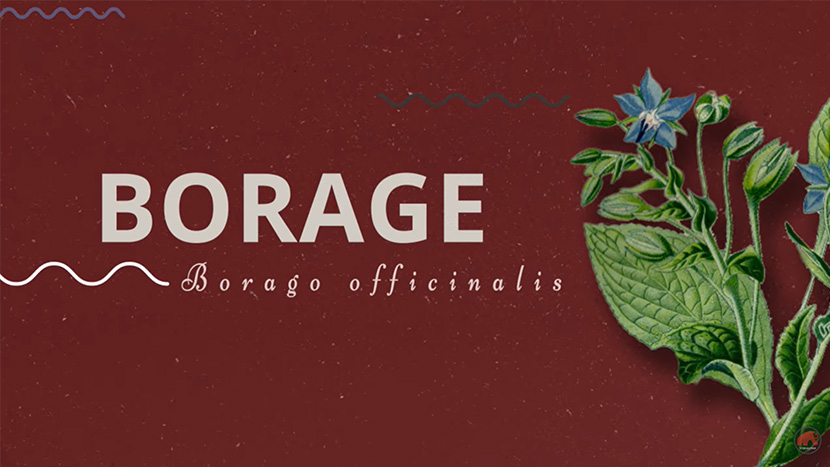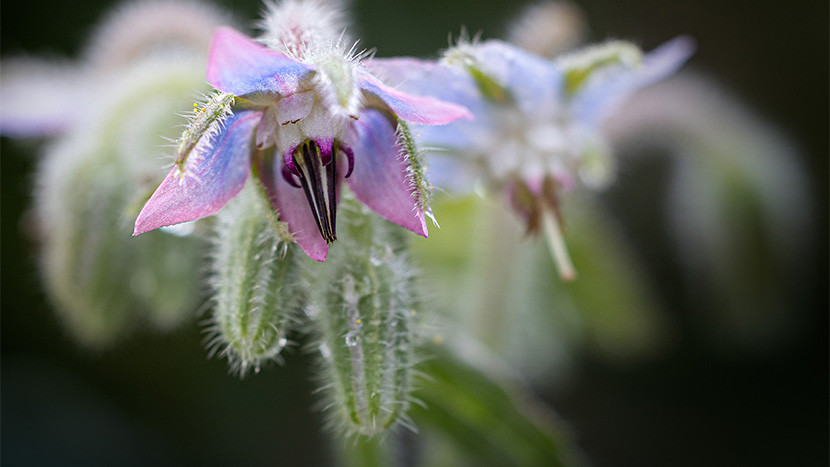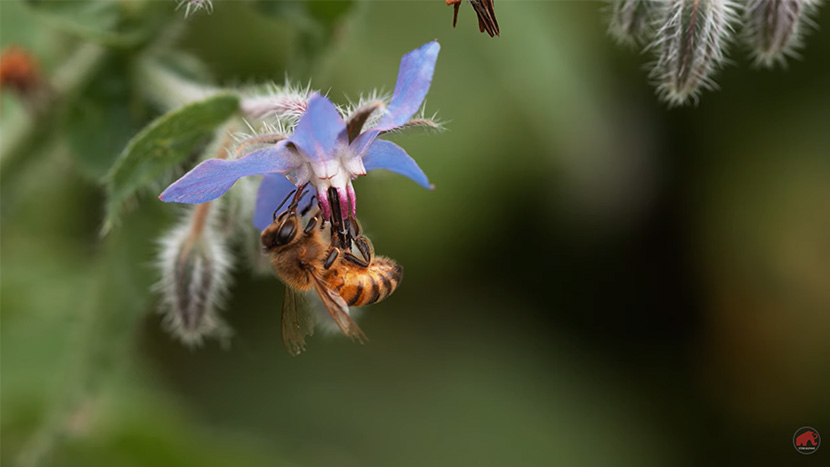All About The Borage Plant

If you are walking along the Mediterranean coastline, enjoying the salty breeze and warm sun, you may notice a unique herb that has a very interesting story to tell. This green herb with unmistakable brilliant blue flowers holds a lot of intriguing lore about its medicinal properties – some of which we can prove today. Our mystery plant has been historically used to coat swords or consumed in order to bring courage in battle, is a candidate for a famous botanical written about by ancient scholars, and has long been used as a medicine to treat ailments of the heart.
Though some of this is uncertain and a bit harder to prove, science has helped us to understand the compounds in this plant that do have medicinal properties; along with others some that can cause harmful side effects in the wrong dose. So, what is the story behind the borage plant and what do we know for sure?
What is Borage?
Borago officinalis is a medium-height, hairy, flowering herb that is well known for its beauty and ability to attract pollinators to gardens. It is also used by herbalists as a “cooling drink” – meaning that it is anti-inflammatory – and others eat the stems and leaves or use the flowers as a beautiful edible garnish.
Originally native to the Mediterranean, borage is now found across much of Europe and North America, mostly Southern Canada and Northern USA, and along the California coast as well as in parts of Alaska.
It is self seeding and grows quickly in many environments. Though some people and organizations caution about its potential to become an invasive plant in some regions, it is not registered with the Global Invasive Species Database and there doesn’t seem to be current literature to support that borage is invasive. (see one example of a report from the Canadian govt here). If you want to be safe, which I always recommended with plants that grow well on their own, you can keep it in pots and garden boxes.
Identify Borage
Borage is most easily spotted by its bright blue flowers. Some people may even call borage “starflower” because of their star shape. These flowers are blue and they also have distinct black anthers that form a sort of cone. The flowers hang slightly down and could be considered clustered.
Borage is a light green herb that grows to about 80 cm to 1 meter in height. It is very hairy (often called pilose in plant ID terms), all the way up the stems and through the leaves. Leaves are alternate and simple, varying in size from 5-15cm (2-6 inches). Overall this is a pretty easy plant to Identify!

The Truth About Borage
Trying to prove whether borage really did help warriors in battle is a bit tricky, but what we can do with modern science is take a look at the compounds found in this plant and see what medicinal properties it might hold. Herbalists for some time have used borage as a “cooling” drink, meaning that it can help reduce inflammation and help treat cardiovascular issues, and now we can study borage’s chemistry to see why. In fact, people have already done this and they have found and extracted the anti-inflammatory compound for use today. This compound is called GLA and is found in some other plants as well.
GLA in Borage
GLA is an omega 6 acid which is well known for its anti-inflammatory properties. This means it can be a great supplement to aid in everything from skin health to discomfort from various ailments, such as MS.
Other plants that GLA is found in, and extracted from are black currant and primrose – but borage has a higher concentration and so it is easy to extract and can be great to make into teas for this. However, like many medicinal plants consumption of borage should be done in moderation due to another compound found throughout it.
The Problem with Borage?
Borage is one medicinal plant that should be consumed in moderation – just like any other medicine found in your cupboard. This is because borage contains compounds called Pyrrolizidine Alkaloids. In higher concentration, these alkaloids can cause liver damage and even cancer (in really high concentrations). Though this tends to make people scared off from trying borage occasionally, there are a lot of things you should only take once and a while. For example, aspirin – which is another well known anti-inflammatory and painkiller – can be harmful to the liver when taken too often.
Using Borage
Now that you know a bit more about this supposedly courage-inducing plant you can consume it in moderation, especially seasonally as it grows in your garden.
Borage leaves and flowers can be made into tea, you can eat the stems and leaves – apparently the young stems can be really nice when lightly cooked – and you can use these beautiful flowers as edible decor in salads, on desserts, in ice cubes, or as a gourmet garnish of your choice really!

Wrapping it Up
Borage is a beautiful herb that can be both a lovely addition to your garden and used in your culinary rotation, in moderation. Boarge is also well known for its high GLA content which makes it a useful anti-inflammatory, especially when the GLA is directly extracted and put into capsules so it can be taken without the risk to one’s liver.
Disclaimer: The StoneAgeMan blog is for informational purposes only and does not constitute medical advice. We are not responsible for any actions taken based on the information provided. Always consult a healthcare professional before using plants for medicinal purposes.

